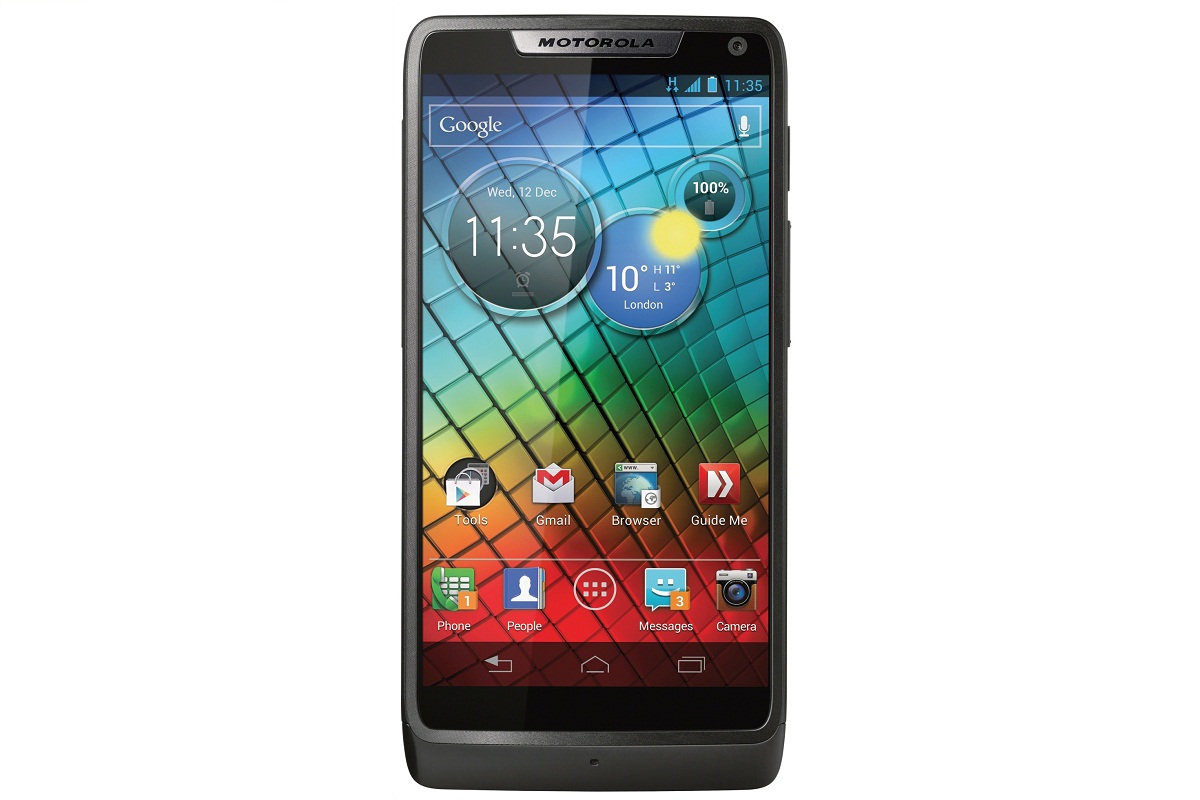Motorola Razr i review
The first Android phone to pack a 2GHz chip courtesy of Intel hits the market, but can it challenge the popular Galaxy S3 handset?
Motorola’s Razr i is a mid-range device, but it’s got a lot going for it: the best battery life we’ve ever seen, good performance thanks to an Intel processor, and good screen quality. The design, build quality and camera are good too, with the only black mark being an older version of Android and no firm timeframe for an update. If range-topping handsets are too expensive or too large, this 4.3in phone is an excellent alternative.


Motorola played a big part in the early success of Android, with its Droid devices catapulting Android into the mainstream, especially in the US. Although Motorola has struggled to compete with the likes of Samsung and HTC in the UK, the Razr i could signal a change of direction.
Instead of relying on chip firms like NVIDIA and Qualcomm - Motorola is the first high-end manufacturer to strap an Intel processor inside its handset.
We've previously seen one of these Medfield-based Atom chips in the Orange San Diego, but the Z2460 used in that handset has been upgraded to the Z2480 in the Razr i. It's still a single-core part with Hyper-Threading, but the clock speed has been raised from 1.6GHz to 2GHz. This makes it one of the fastest phones we've ever seen.
Performance
The Razr i's theoretical power translated to decent benchmark performance. In GeekBench the Razr i scored 981 higher than the 709 scored by the HTC One X, but lagging behind the 1,387 result of Samsung's Galaxy S3

The Razor i is the first handset to ship with a 2GHz processor
The Razr i performed well in other benchmarks, too. The Intel processor overhauled the Samsung's quad-core Exynos chip in the SunSpider benchmark, completing the test in 1,052ms quicker than the 1,430ms of the Samsung.
Using an Intel chip provides plenty of power as expected when bench-marking, but it does translate to excellent real-world performance. Android was slick in use, with no hint of juddering when opening the app drawer, navigating menus or switching between homescreens, and games ran largely without issues we noticed the tiniest of framerate drops in graphical intensive apps such as Reckless Racing 2 and Dead Trigger, but it's not enough to stop us playing.
Get the ITPro daily newsletter
Sign up today and you will receive a free copy of our Future Focus 2025 report - the leading guidance on AI, cybersecurity and other IT challenges as per 700+ senior executives
Mike Jennings has worked as a technology journalist for more than a decade and has been fascinated by computers since childhood, when he spent far too long building terrible websites. He loves desktop PCs, components, laptops and anything to do with the latest hardware.
Mike worked as a staff writer at PC Pro magazine in London for seven years, and during that time wrote for a variety of other tech titles, including Custom PC, Micro Mart and Computer Shopper. Since 2013, he’s been a freelance tech writer, and writes regularly for titles like Wired, TechRadar, Stuff, TechSpot, IT Pro, TrustedReviews and TechAdvisor. He still loves tech and covers everything from the latest business hardware and software to high-end gaming gear, and you’ll find him on plenty of sites writing reviews, features and guides on a vast range of topics.
You can email Mike at mike@mike-jennings.net, or find him on Twitter at @mikejjennings
-
 Nvidia braces for a $5.5 billion hit as tariffs reach the semiconductor industry
Nvidia braces for a $5.5 billion hit as tariffs reach the semiconductor industryNews The chipmaker says its H20 chips need a special license as its share price plummets
By Bobby Hellard Published
-
 Business leaders are having a crisis of confidence over data literacy
Business leaders are having a crisis of confidence over data literacyNews A Salesforce survey reveals business leaders don't trust their data, or their ability to make the most of it
By Emma Woollacott Published
-
 MITRE CVE program handed last minute reprieve amid funding lapse concerns
MITRE CVE program handed last minute reprieve amid funding lapse concernsNews The MITRE Corporation's Common Vulnerabilities and Exposures (CVEs) database has been handed a last minute reprieve amid concerns over funding.
By Rory Bathgate Last updated